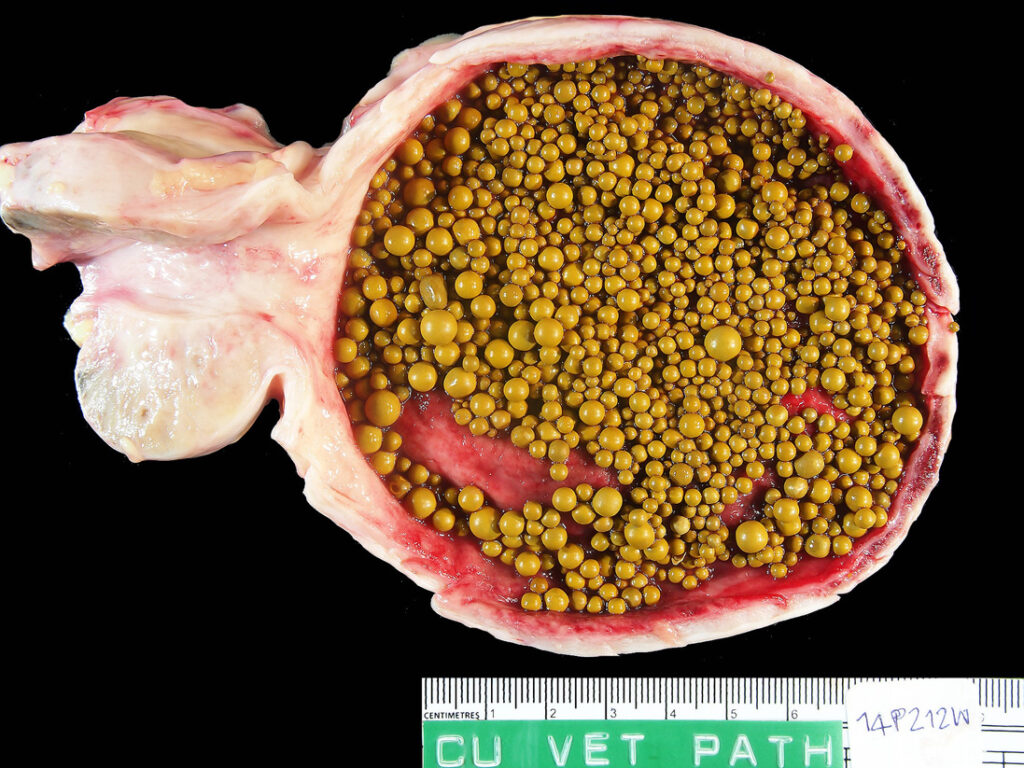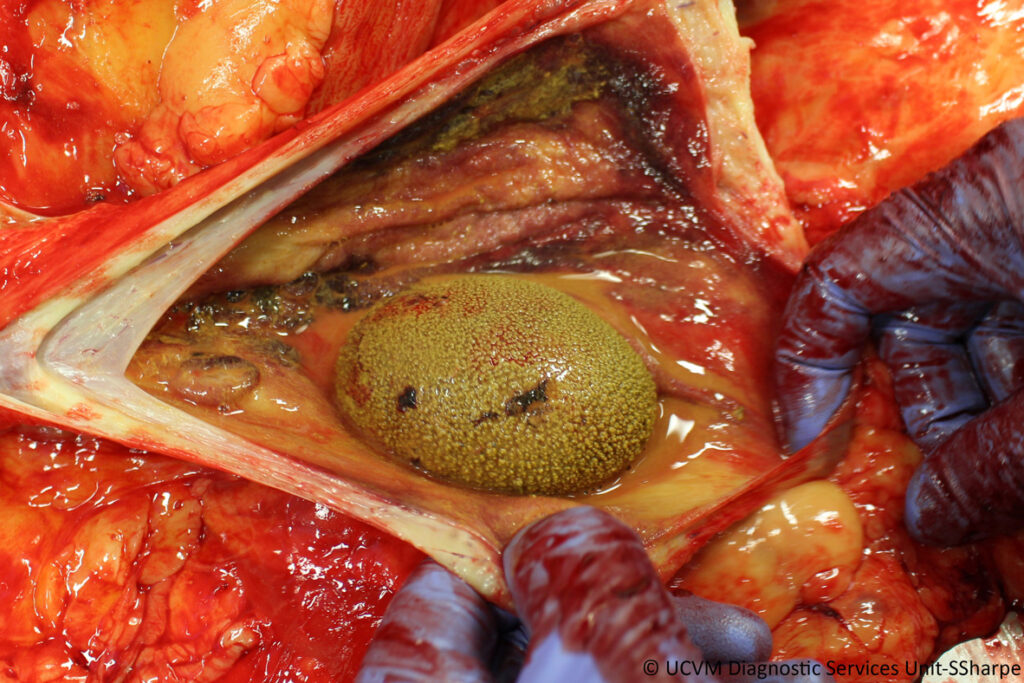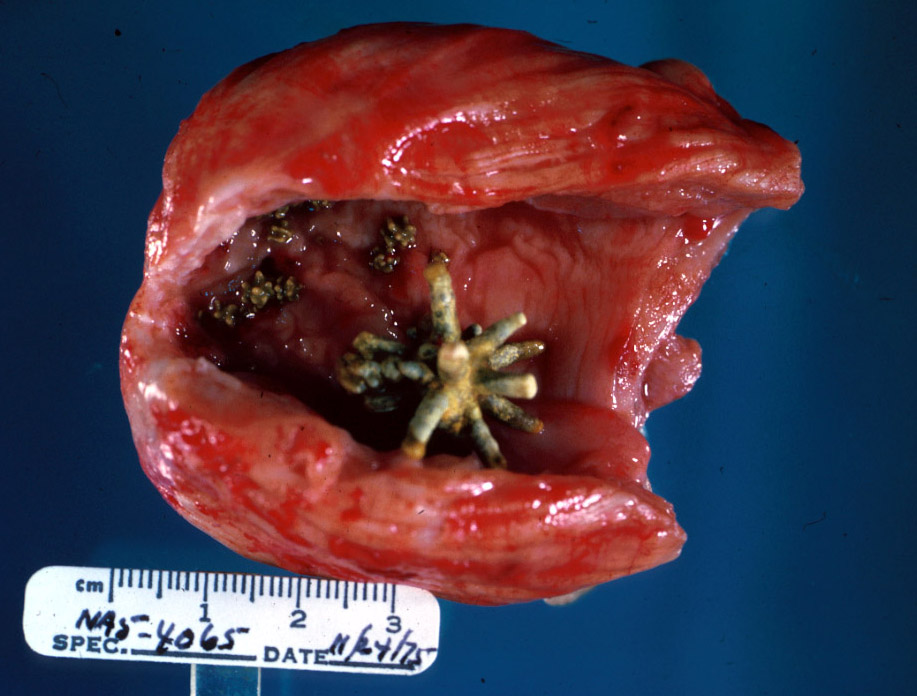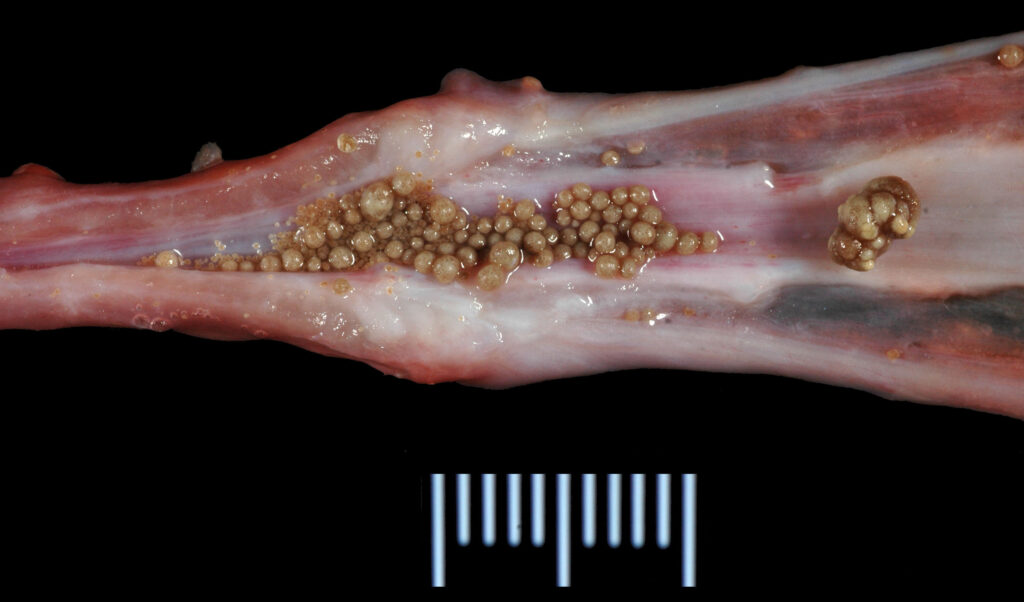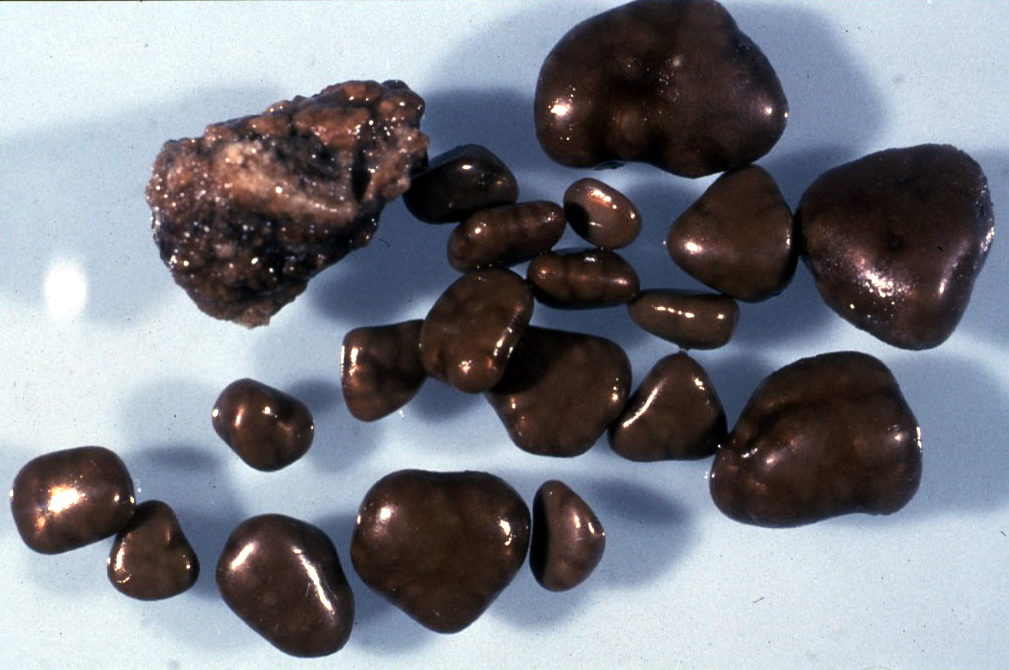Let’s talk about rocks! Today’s path rounds is on 𝐮𝐫𝐨𝐥𝐢𝐭𝐡𝐢𝐚𝐬𝐢𝐬! This was a suggestion ![]()
𝐖𝐡𝐚𝐭 𝐢𝐬 𝐢𝐭?
𝐔𝐫𝐨𝐥𝐢𝐭𝐡𝐢𝐚𝐬𝐢𝐬 is the presence of 𝐮𝐫𝐢𝐧𝐚𝐫𝐲 𝐜𝐚𝐥𝐜𝐮𝐥𝐢 (stones, basically) in the urinary passages, typically in the bladder or urethra. You can also get calculi in the kidney, called 𝐧𝐞𝐩𝐡𝐫𝐨𝐥𝐢𝐭𝐡𝐬, as part of the same disease process. The stones are made up of precipitated urine contents, proteins and debris, which clump together and can obstruct normal flow of urine.
𝐖𝐡𝐨 𝐠𝐞𝐭𝐬 𝐢𝐭?
All species can get this! While looking for photos for this post, I found photos in everything from tortoises to sheep to kangaroos.
𝐖𝐡𝐚𝐭 𝐜𝐚𝐮𝐬𝐞𝐬 𝐮𝐫𝐨𝐥𝐢𝐭𝐡𝐢𝐚𝐬𝐢𝐬?
There are a wide variety of causes, but the basic underlying issue is that there is so much 𝐜𝐚𝐥𝐜𝐮𝐥𝐨𝐠𝐞𝐧𝐢𝐜 𝐦𝐚𝐭𝐞𝐫𝐢𝐚𝐥 (material that forms calculi) dissolved within the urine that it starts to aggregate and form mineral or sludge. In general, this can happen due to metabolic issues, high levels of a compound in the diet, or even infection. On top of that, there are different kinds of uroliths that form during different disease states. For example, some uroliths prefer acidic urine, and some prefer basic urine.
𝐇𝐨𝐰 𝐜𝐨𝐮𝐥𝐝 𝐚 𝐦𝐞𝐭𝐚𝐛𝐨𝐥𝐢𝐜 𝐢𝐬𝐬𝐮𝐞 𝐜𝐚𝐮𝐬𝐞 𝐮𝐫𝐨𝐥𝐢𝐭𝐡𝐢𝐚𝐬𝐢𝐬?
The classic example of this are 𝐮𝐫𝐚𝐭𝐞 𝐬𝐭𝐨𝐧𝐞𝐬 in Dalmatians. The Dalmatian breed has a genetically linked defect in an enzyme in their liver, that prevents proper conversion of 𝐮𝐫𝐢𝐜 𝐚𝐜𝐢𝐝 (a breakdown product of protein) into more soluble forms that dissolve easier in urine. This leads to high levels of uric acid in the urine, and when the uric acid is exposed to high levels of 𝐚𝐦𝐦𝐨𝐧𝐢𝐚 (excreted in the urine) and an acidic environment, it forms stones. Thus, Dalmatians have a significantly increased risk of developing urate stones.
𝐖𝐡𝐚𝐭 𝐚𝐛𝐨𝐮𝐭 𝐝𝐢𝐞𝐭?
𝐒𝐢𝐥𝐢𝐜𝐚 𝐬𝐭𝐨𝐧𝐞𝐬 are a good example of this, most commonly seen in ruminants, but occasionally seen in dogs as well. In ruminants, silica stones are caused by high levels of silica in the grass they eat on pasture, which gets absorbed into the bloodstream. Silica would normally be excreted just fine in the urine, however if the animal reduces urine production for any reason, for example dehydration or sweating profusely, then stones may form. Silica stones also tend to only form in basic urine, so feeding a diet that encourages a basic urine composition may also lead to formation of silica stones. Similarly, plants containing high levels of 𝐨𝐱𝐚𝐥𝐚𝐭𝐞 (a type of acid that commonly binds with calcium) can cause 𝐨𝐱𝐚𝐥𝐚𝐭𝐞 𝐬𝐭𝐨𝐧𝐞𝐬 in sheep.
𝐖𝐡𝐚𝐭 𝐚𝐛𝐨𝐮𝐭 𝐢𝐧𝐟𝐞𝐜𝐭𝐢𝐨𝐧𝐬?
𝐒𝐭𝐫𝐮𝐯𝐢𝐭𝐞 𝐬𝐭𝐨𝐧𝐞𝐬 commonly form after bladder infections, and are made up of a magnesium compound. Certain bacteria produce 𝐮𝐫𝐞𝐚𝐬𝐞𝐬, which are enzymes that break down 𝐮𝐫𝐞𝐚 (excretion form of uric acid) and cause an increase in the pH of the urine. When the urine becomes more basic, the solubility of struvite in the urine decreases, causing it to precipitate out and form stones. Sometimes these stones can form without a bacterial infection simply due to a urine pH change, which is common in cats. In male cats, struvites tend to form 𝐬𝐚𝐛𝐮𝐥𝐨𝐮𝐬 𝐩𝐥𝐮𝐠𝐬 (sandy, gel-like material) that block the urethra. If you’ve ever had to rush your male kitty to the vet for being “blocked”, you have struvites to blame!
𝐖𝐡𝐲 𝐚𝐫𝐞 𝐭𝐡𝐞𝐲 𝐚 𝐩𝐫𝐨𝐛𝐥𝐞𝐦?
Uroliths are a problem because they can get stuck pretty much anywhere along the urinary tract! If this happens, then urine cannot flow properly, which can have some devastating consequences. Most commonly, the stone causes 𝐩𝐫𝐞𝐬𝐬𝐮𝐫𝐞 𝐧𝐞𝐜𝐫𝐨𝐬𝐢𝐬 (death of tissue due to pressure) in the area where it lodges, which is extremely painful. And because urine isn’t flowing to be able to flush out bad bacteria, secondary bladder infections can occur. In extreme untreated cases, the bladder can fill up to the point where it pops, or urine can back up into the kidneys causing 𝐡𝐲𝐝𝐫𝐨𝐧𝐞𝐩𝐡𝐫𝐨𝐬𝐢𝐬 (dilation of the normal tubules due to fluid pressure). And most significant of all, without proper excretion of urine, potassium builds up in the bloodstream and cause a life-threatening 𝐛𝐫𝐚𝐝𝐲𝐜𝐚𝐫𝐝𝐢𝐚 (slow heart beat).
𝐇𝐨𝐰 𝐢𝐬 𝐢𝐭 𝐝𝐢𝐚𝐠𝐧𝐨𝐬𝐞𝐝?
Animals with urolithiasis often present with 𝐬𝐭𝐫𝐚𝐧𝐠𝐮𝐫𝐢𝐚 (painful, frequent urination of small volumes), 𝐝𝐲𝐬𝐮𝐫𝐢𝐚 (difficulty urinating) and 𝐡𝐞𝐦𝐚𝐭𝐮𝐫𝐢𝐚 (blood in the urine). On physical exam, the veterinarian might be able to palpate a large, firm bladder in the abdomen. In small animals, the veterinarian will often take X-rays or do an ultrasound to try and visualize the stones. In large animals, the practitioner might do an ultrasound via the rectum to visualize the stone, or use an 𝐞𝐧𝐝𝐨𝐬𝐜𝐨𝐩𝐞 (a camera on a long tube) to enter the bladder and visualize the stone directly.
𝐇𝐨𝐰 𝐢𝐬 𝐢𝐭 𝐭𝐫𝐞𝐚𝐭𝐞𝐝?
Mild cases of urolithiasis can sometimes be treated with an 𝐚𝐜𝐢𝐝𝐢𝐟𝐲𝐢𝐧𝐠 𝐝𝐢𝐞𝐭, which makes the urine more acidic. These diets can only be used if the stone type is able to be dissolved in an acidic environment, so consultation with your veterinarian is extremely important. The veterinarian may also complete a procedure called 𝐮𝐫𝐨𝐡𝐲𝐝𝐫𝐨𝐩𝐫𝐨𝐩𝐮𝐥𝐬𝐢𝐨𝐧, where the bladder is flushed repeatedly. However, this procedure only works on small stones, and more severe cases will require surgical removal of the stones. After treatment, follow-up preventative measures are very important to keep the stones from developing again!
𝐏𝐡𝐨𝐭𝐨𝐬
1) An X-ray showing uroliths. Not all uroliths are 𝐫𝐚𝐝𝐢𝐨-𝐨𝐩𝐚𝐪𝐮𝐞 (show up on X-ray) so clinicians have to be careful!
2) Urate crystals in the bladder of a Dalmatian.
3) A carbonate stone in the bladder of a horse.
4) A silica stone in the bladder of a dog.
5) Struvite stones in the urethra of a cat.
6) Calcium apatite stones from a kangaroo!
7) Nephroliths in a dog’s kidney.
8) Oxalate nephroliths in an Asian Small-Clawed Otter. Apparently these stones are extremely common in this species, with up to 89% having nephroliths. Who knew?
9) Oxalate nephroliths in a sheep kidney. This kidney is also displaying severe hydronephrosis… looks like Swiss cheese! ![]()
𝐒𝐨𝐮𝐫𝐜𝐞𝐬
Maxie, G. Jubb, Kennedy and Palmer’s Pathology of Domestic Animals, Volume 2. Sixth Edition.
Photo 1 courtesy of Wikimedia Commons.
Photos 2, 4-6 and 8 courtesy of Noah’s Arkive.
Photos 3 and 7 courtesy of University of Calgary Diagnostic Services Unit.
Photo 9 courtesy of Western College of Veterinary Medicine.


